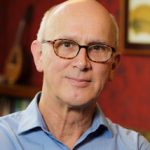
About a decade ago I had the privilege of attending a private papal Mass in one of the chapels in the Vatican’s Apostolic Palace. I sat near the center of the rear wall. When John Paul II processed in, he passed in profile directly in front of me and then turned up the aisle toward the altar. I had a close view of him and was taken aback by his appearance: wan, lined, so obviously tired. “Not much longer for this world,” I thought.
I thought wrong. Here it is, nearly ten years later, and the Pope is still the pope. His hands tremble visibly now, and he is more bent than when I met him, but he carries on. He has the frailties of an octogenarian who works hard and sleeps little, so I would not be surprised to learn one morning that he had passed away quietly in his sleep, nor would I be surprised to see him reaching, seven years hence, his ninetieth birthday.
Already he is one of the longest-reigning popes. The average papal reign has been seven-and-a-half years. I do not expect John Paul II to serve as long as the first pope, about 34 years (this assumes that the Crucifixion occurred in 30 and that Peter was martyred in 64), but, as he celebrates his silver jubilee, the Holy Father is only nine years from that mark.
Most Catholics have no vivid recollection of any pope prior to him. One would have to be nearing forty to remember much about Paul VI and over fifty to have any real memory of John XXIII. John Paul II has been in office so long that the earlier years of his reign already are receding into history; they no longer are “today.” A president might serve four or eight years—what he said and did when first assuming office remains sufficiently close in time that it maintains a kind of contemporaneity. John Paul II’s earliest actions as pope seem to have occurred a generation ago—because in fact they did.
I am not privy to the editorial plans of other Catholic publications, but I expect that most of them will devote one or more articles in their October issues to a retrospective on John Paul II. There is so much to consider when writing about him! No one magazine will be able to do justice to what he has said and done in the last twenty-five years. It will be many more years—likely decades—before a sufficiently full understanding can be had of this pontificate, which doubtless will be seen as one of the most important in Church history.
My guess is that nearly all of the articles in the mainstream Catholic press will confine themselves to the evident strengths of the current papacy and to an appreciation of the Holy Father as a man of prayer and learning. There will be unavoidable redundancy, and there also will be some imbalance.
Every private life, even the most saintly one, has lights and shadows. So too does every public life. Even the most impressive saints have manifested stronger and weaker characteristics. This can be said even of sainted popes, beginning with the first one, Peter, and including those most recently canonized, Pius X (died 1914), Pius V (died 1572), and Celestine V (died 1296).
If we want to know a thing as it really is, we need to know it in its roundedness, in all its.aspects. This is true of the animate and inanimate world around us, and it is true of human affairs and of individual men. To know only their lights and not their shadows is to know them inadequately. We do ourselves a disservice if we look with only one eye.
With this principle in mind, and with the expectation that most articles about John Paul II will examine only the strongest and most successful elements of his pontificate, we have asked two trustworthy and orthodox scholars who are admirers of the Holy Father, Prof. James Hitchcock and Fr. Brian Harrison, to contribute to a more balanced picture of the Pope and his accomplishments.
Our charge to them was simple: Give us articles that will help readers weigh the pluses and minuses. Do not duplicate what others likely will write—we do not have remotely enough pages to cover John Paul II from all possible angles, as much as we would like to do that. Our readers have ready access to other publications. Give them insights and commentary that will help them come to a fuller and truer appreciation of the Holy Father, so they will be able to view his pontificate “as it really is.”
In my own piece on the Pope, I focus on a single theme, his success in offering hope to a world that in so many ways is falling headlong into hopelessness. I call him the pope of the transition because he reigns as we experience the end of one age and the beginning of another. In a generation or two the Church may enjoy a new springtime. If so, the hope that John Paul II has instilled will have brought us there.


